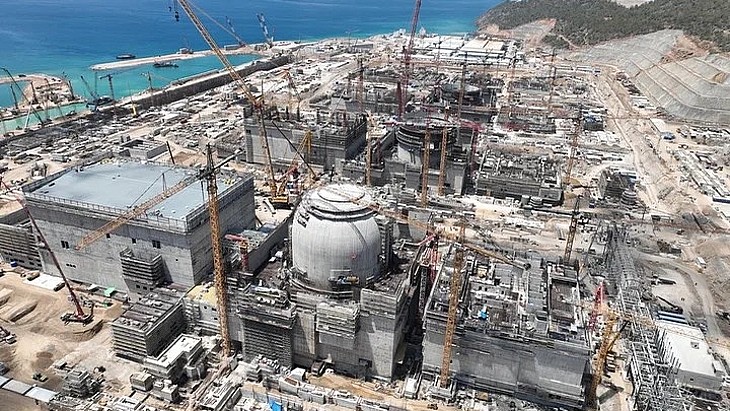Ontario can decarbonise with help of nuclear, report finds
.jpg)
Pathways to Decarbonization is one of three reports released simultaneously by IESO. The study was undertaken at the request of Ontario's Ministry of Energy, which asked the operator to evaluate a moratorium on procurements of new natural gas generating stations in Ontario and develop a pathway to zero emissions in the electricity sector. It does this by presenting two scenarios: Moratorium, assessing the potential for capacity, energy and transmission expansion without additional natural gas generation after the IESO's current long-term procurement for new supply; and Pathways, which looks at decarbonisation of Ontario's electricity system in the context of high electricity demand based on substantial electrification in other sectors.
The assessment under the Moratorium scenario showed that a moratorium on new gas generation would be feasible for Ontario from 2027, provided that other forms of non-emitting supply can be added to the system in time to keep pace with demand growth. It also found that emissions could begin to decrease "significantly" once current nuclear refurbishment programmes are completed and new non-emitting supply enters the system, with 4000 MWe of natural gas generation being retired and emissions falling by 60% - although natural gas generation would still be needed to continue to provide flexibility to the broader system and meet local needs in the Greater Toronto Area.
To fully decarbonise the electricity sector by 2050 - illustrated by the Pathways scenario - there would need to be "aggressive" electrification targets, and would require a system more than double the size it is today, needing an additional 69,000 MWe of non-emitting supply and 5,000 MWe in demand reductions from conservation to be able to reliably meet a new winter peak demand of 60,000 MWe, IESO found. To ahieve this, it said, Ontario will need all of the resources available to it to simultaneously expand and decarbonise. While some of these options - wind, solar, hydroelectric and large nuclear - are already available and understood, others, such as small modular reactors (SMRs) and low-carbon fuels, will require support, it added.
Beginning planning and siting work for long lead-time projects - including nuclear projects - is one of a list of "no regret" actions identified in the report that Ontario could take towards decarbonisation.
Ken Hartwick, president and CEO of Ontario Power Generation, said the report illustrated the "scope and magnitude of work necessary" to grow and decarbonise the electricity system to support electrification and a "thriving" economy. "A mix of generation technologies is consistent with OPG's 'all-hands-on-deck' approach to meeting growing energy needs, and we look forward to advancing much-needed new generation in partnership with Indigenous communities," he added.
OPG recently began site preparation for Canada's first grid-scale SMR, and is also in the process of refurbishing all four Candu units at Darlington in a 10-year, CAD12.8 billion (currently about USD9.5 billion) project that will enable the reactors to operate for the next 30 years.
The study "sends a clear signal that nuclear power is essential to building an achievable path to Net Zero," Bruce Power said in response to the report. "Ontario is a leader in nuclear innovation, and with many promising new energy technologies on the horizon, it's important to recognise that large-scale nuclear continues to do the heavy-lifting for the province's clean energy needs, the company said. Bruce Power is currently undertaking a programme to extend the operational life of its eight reactors by 30 to 35 years.
Pathways to Decarbonization was released at the same time as IESO's Annual Planning Outlook, which provides a long-term view of the province's electricity needs, and Conservation and Demand Management Framework Mid-Term Review, which sets out recommendations and next steps to reach of 725 MWe of peak demand savings and 3.8 TWh of energy savings by 2025.


_53540.jpg)










